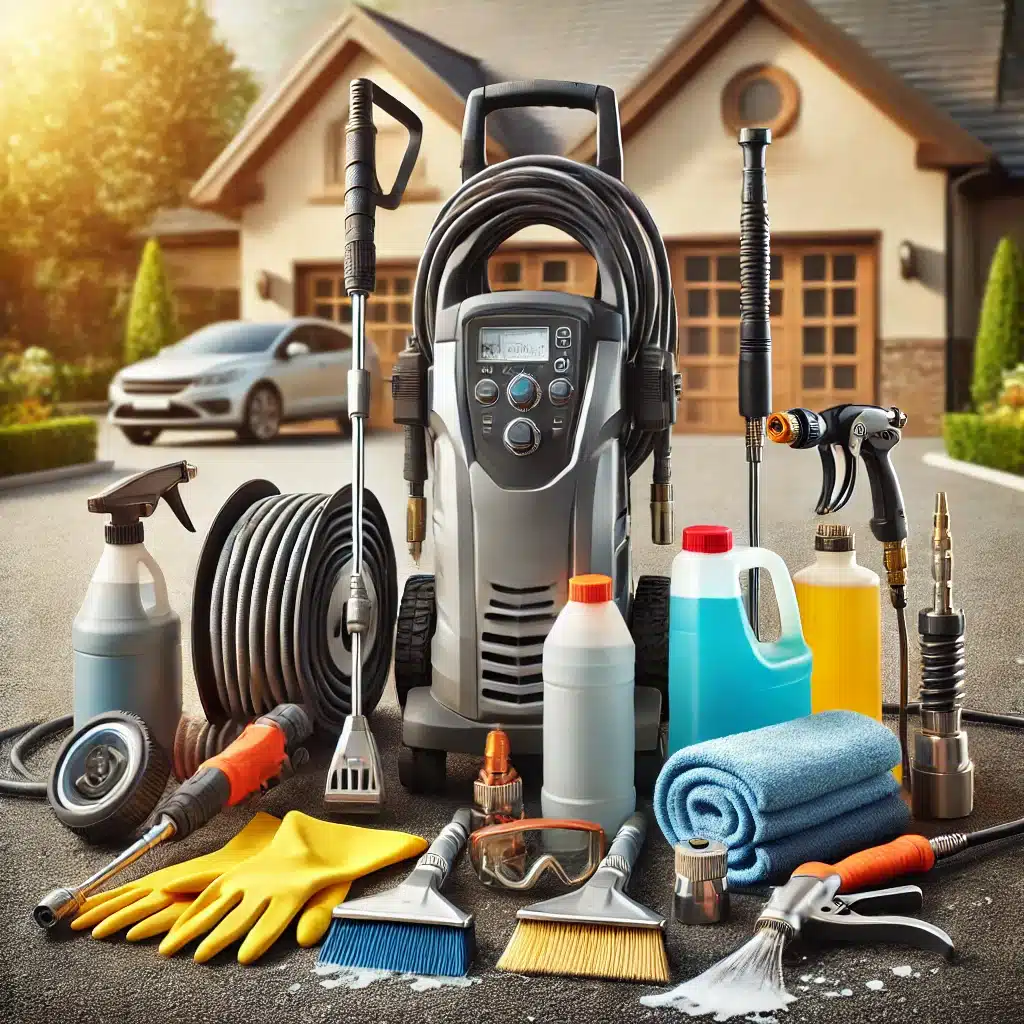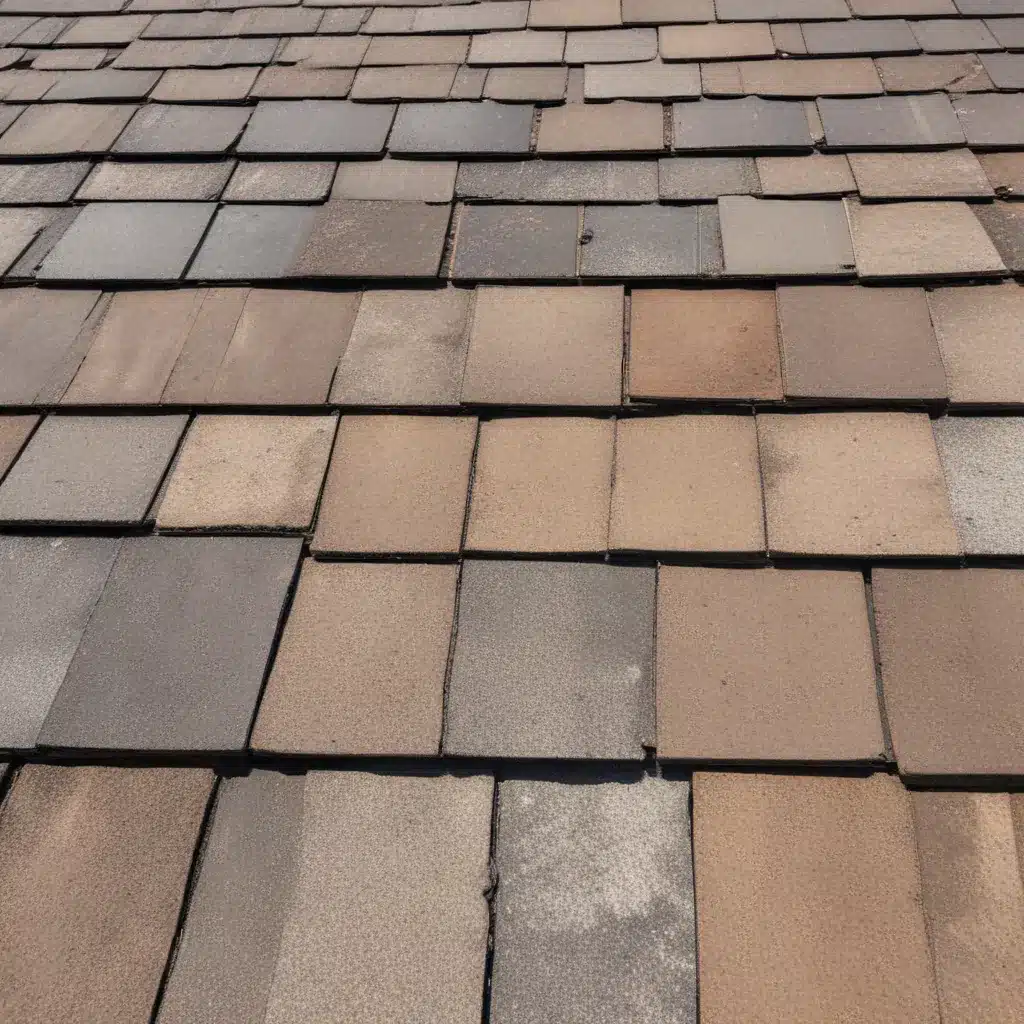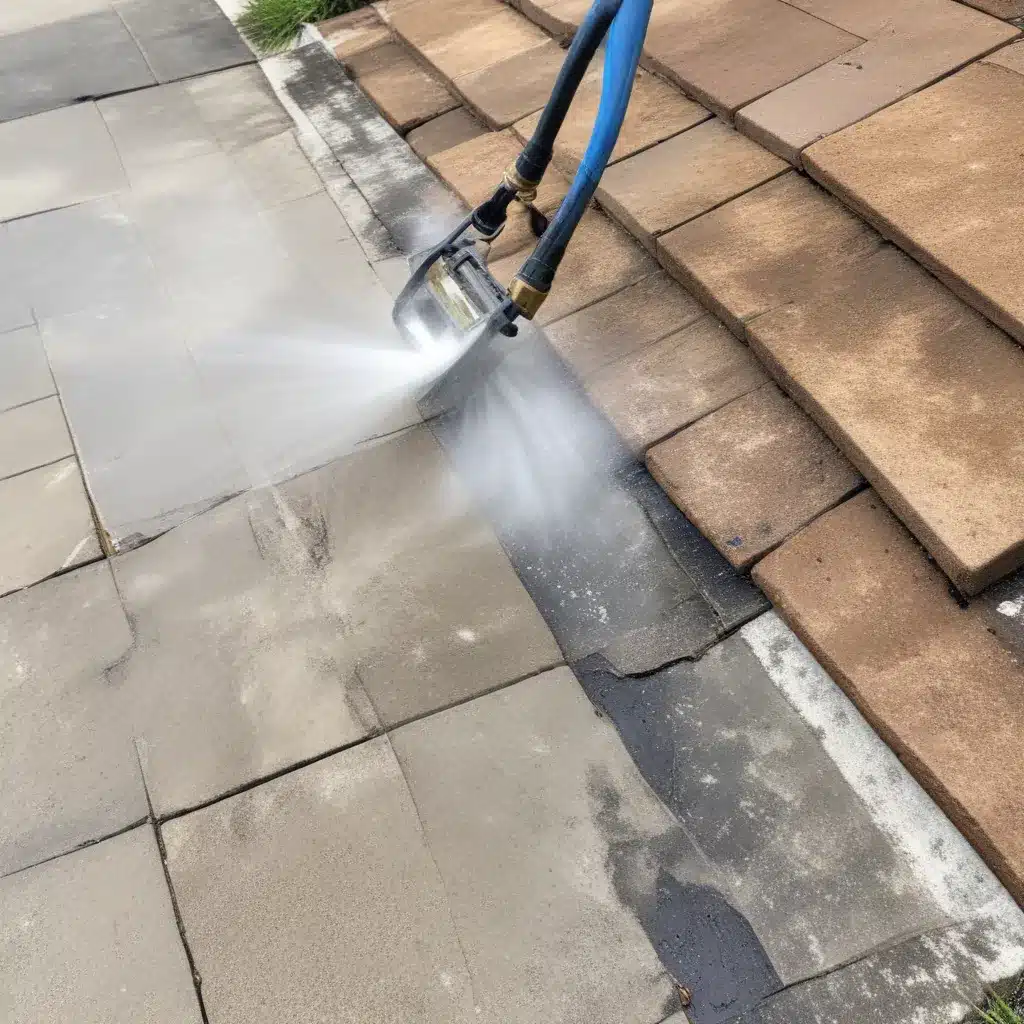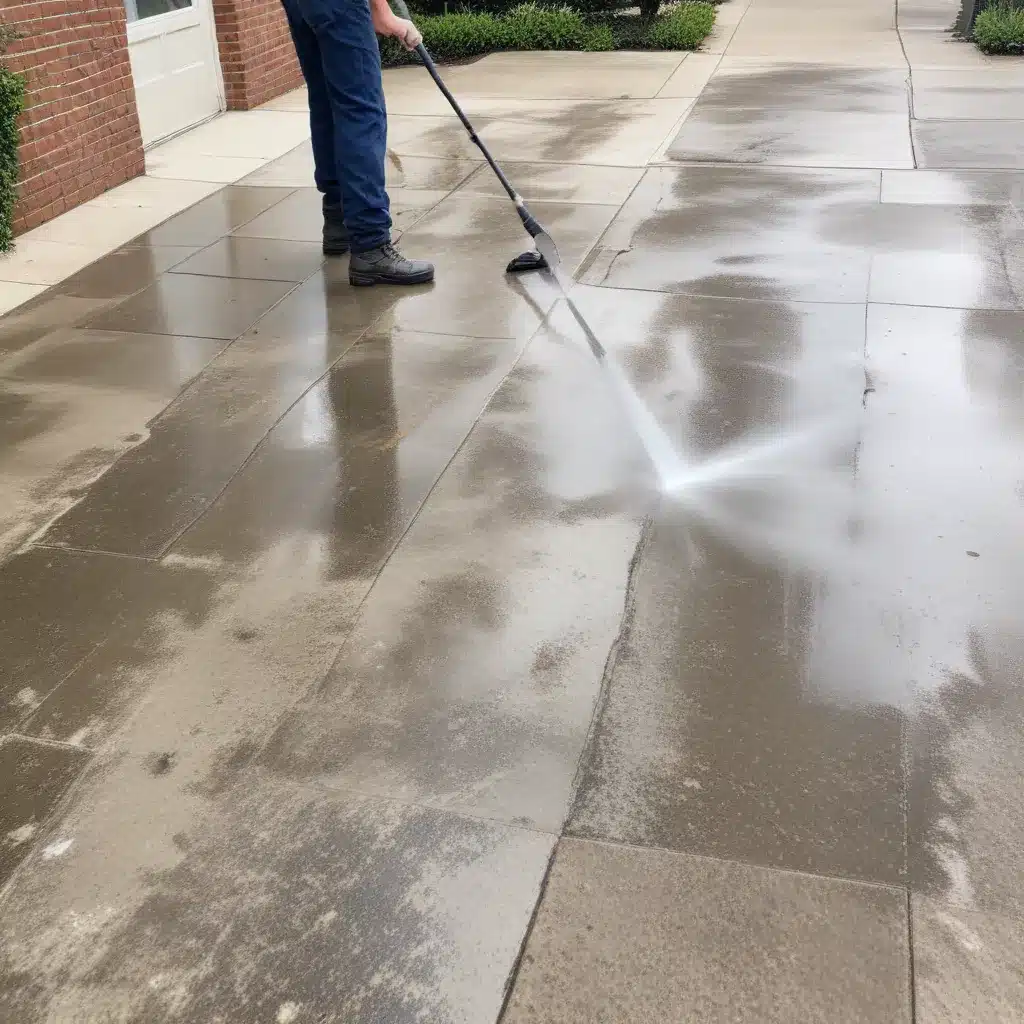When it comes to property value and first impressions, curb appeal plays a crucial role. I’ve seen countless homes transform from dull and uninviting to stunning showcases with just a few simple improvements. One of the most effective ways to enhance your property’s curb appeal is through professional pressure washing.
As a homeowner, I understand the pride we take in our living spaces. The exterior of our homes is the first thing visitors, neighbors, and potential buyers see. It sets the tone for what lies within. A well-maintained exterior not only boosts property value but also creates a welcoming atmosphere that reflects positively on the entire neighborhood.
Curb appeal isn’t just about aesthetics; it’s about making a statement. It tells the world that you care about your property and take pride in its appearance. In today’s competitive real estate market, a home with strong curb appeal can stand out from the crowd, potentially increasing its market value and reducing the time it spends on the market if you decide to sell.
What is Pressure Washing?
Pressure washing, also known as power washing, is a cleaning method that uses high-pressure water spray to remove dirt, grime, mold, and other stubborn substances from surfaces. This technique is incredibly effective for cleaning exterior surfaces of homes, driveways, decks, and various other outdoor areas.
The key component of pressure washing is the pressure washer itself. This machine takes ordinary water and amplifies its cleaning power by pressurizing it to levels between 1,000 and 4,000 pounds per square inch (PSI). When this pressurized water hits a surface, it easily dislodges dirt and debris that would be difficult or impossible to remove with traditional cleaning methods.
Pressure washing isn’t just about brute force, though. Different surfaces require different approaches. For example:
- Concrete driveways might need high pressure to remove oil stains and ground-in dirt.
- Wooden decks require a gentler touch to avoid damaging the wood fibers.
- Vinyl siding needs a specific technique to clean effectively without forcing water behind the panels.
Understanding these nuances is what separates professional pressure washing services from DIY attempts. Professionals know exactly how to adjust the pressure, choose the right nozzles, and use appropriate cleaning solutions for each unique surface and stain type.
Benefits of Professional Pressure Washing Services
Opting for professional pressure washing services offers numerous advantages over attempting to do it yourself. Here are some key benefits I’ve observed:
- Expertise and Experience: Professional pressure washers have the knowledge and skills to clean various surfaces effectively without causing damage. They understand the right pressure levels, cleaning solutions, and techniques for different materials.
- Time and Effort Savings: Pressure washing can be a time-consuming task, especially for larger properties. Professionals can complete the job quickly and efficiently, saving you valuable time and energy.
- Superior Results: With their industrial-grade equipment and specialized cleaning solutions, professionals can achieve a level of cleanliness that’s difficult to match with consumer-grade tools.
- Prevention of Property Damage: Improper pressure washing can cause significant damage to your property. Professionals know how to avoid common pitfalls like etching concrete, splintering wood, or forcing water into unwanted areas.
- Increased Property Value: Regular professional cleaning can help maintain and even increase your property’s value by keeping it in top condition.
- Health Benefits: Pressure washing removes allergens, mold, and mildew that can affect your family’s health. This is particularly important for those with respiratory issues or allergies.
- Preparation for Other Projects: If you’re planning to paint or reseal surfaces, professional pressure washing provides the clean slate needed for these projects to succeed.
By investing in professional pressure washing services, you’re not just cleaning your property; you’re protecting your investment and ensuring it looks its best year-round.
Common Areas That Need Pressure Washing
When it comes to pressure washing, several areas of your property can benefit from this deep cleaning method. Here are some of the most common areas I recommend focusing on:
- Exterior Walls: Your home’s siding, whether it’s vinyl, brick, or stucco, accumulates dirt, algae, and grime over time. Pressure washing can restore its original color and luster.
- Driveways and Walkways: Concrete and asphalt surfaces are magnets for oil stains, tire marks, and embedded dirt. Regular pressure washing keeps these areas clean and safe.
- Decks and Patios: Wooden decks and stone patios are exposed to the elements year-round. Pressure washing removes built-up grime and can help prevent wood rot and stone deterioration.
- Fences: Whether wood or vinyl, fences benefit from occasional pressure washing to remove mold, mildew, and discoloration.
- Roofs: While requiring a gentler approach, roof cleaning can remove unsightly algae and moss growth that can damage shingles over time.
- Gutters: Often overlooked, gutters can become clogged with debris and develop exterior stains. Pressure washing can clean both the inside and outside of gutters.
- Outdoor Furniture: Patio furniture, especially if left outside year-round, can accumulate dirt and grime. Pressure washing can make them look new again.
- Garage Floors: Often stained with oil and other automotive fluids, garage floors can be restored to their original condition with proper pressure washing.
- Pool Areas: Concrete or stone around pools can develop algae growth and become slippery. Regular cleaning enhances safety and aesthetics.
- Retaining Walls: These structures often develop a grimy, mossy appearance over time. Pressure washing can dramatically improve their look.
By addressing these areas regularly with pressure washing, you can maintain a clean, attractive property that stands out in your neighborhood. Remember, each of these surfaces may require different techniques and pressures, which is why professional services can be invaluable.
How Often Should You Pressure Wash Your Property?
The frequency of pressure washing your property depends on several factors, including your local climate, the surrounding environment, and the specific surfaces you’re cleaning. However, I can provide some general guidelines based on my experience:
- Exterior Walls: Once a year is typically sufficient for most homes. However, if you live in a humid climate or an area with high pollution, you might need to clean more frequently.
- Driveways and Walkways: These high-traffic areas often benefit from bi-annual cleaning, typically in spring and fall.
- Decks and Patios: Annual cleaning is usually adequate, preferably in spring to prepare for the outdoor season.
- Roofs: Every 2-3 years is often enough, unless you notice significant algae or moss growth.
- Fences: Wooden fences may need annual cleaning, while vinyl fences can often go 2-3 years between cleanings.
- Gutters: While you should clean out debris more often, pressure washing gutters once a year, typically in late fall after the leaves have fallen, is usually sufficient.
Remember, these are general guidelines. You should adjust based on your specific circumstances. For example, if you live near the coast, salt air might necessitate more frequent cleaning. Similarly, if your property is surrounded by trees, you might need to clean more often due to sap, leaves, and organic debris.
Regular inspections of your property can help you determine when it’s time for a pressure wash. Look for signs like:
- Visible dirt, grime, or discoloration
- Algae or moss growth
- Stains from environmental factors (like rust from nearby construction)
- A generally dull appearance compared to when it was last cleaned
By staying proactive with your pressure washing schedule, you can maintain your property’s appearance and potentially prevent more serious issues from developing over time.
Essential Pressure Washing Tools and Equipment
When it comes to pressure washing, having the right tools and equipment is crucial for achieving optimal results. Whether you’re considering DIY pressure washing or want to understand what professionals use, here’s a rundown of the essential items:
- Pressure Washer: The heart of the operation. Pressure washers come in various sizes and power levels, measured in PSI (pounds per square inch) and GPM (gallons per minute). For most residential uses, a machine with 1500-3000 PSI and 1.5-3 GPM is sufficient.
- Nozzles: Different nozzles create different spray patterns and pressures. Common types include:
- 0° (red): Pinpoint spray for tough stains
- 15° (yellow): For heavy-duty cleaning
- 25° (green): All-purpose cleaning
- 40° (white): For light cleaning and rinsing
- 65° (black): Low-pressure nozzle for applying soap
- Extension Wand: Useful for reaching high areas like second-story siding or gutters without a ladder.
- Surface Cleaner Attachment: This circular attachment is excellent for cleaning large flat surfaces like driveways and patios quickly and evenly.
- Pressure Washer Hoses: High-pressure hoses designed to withstand the water pressure. Longer hoses provide more reach.
- Cleaning Solutions: Specialized detergents designed for pressure washing can enhance cleaning power for different surfaces and stains. For top-quality pressure washers and other equipment, visit National Site Supplies.
- Safety Equipment: Essential items include:
- Safety goggles
- Ear protection
- Non-slip, closed-toe shoes
- Gloves
- Ladder: For reaching high areas safely. Always ensure it’s sturdy and placed on level ground.
- Brushes and Scrubbers: Sometimes, a bit of manual scrubbing is needed before or after pressure washing for optimal results.
- Tarps or Plastic Sheeting: To protect plants, outdoor furniture, or other items from overspray.

Professional pressure washing services often have access to more powerful and specialized equipment, including:
- Hot Water Pressure Washers: These can be more effective for certain types of stains and grime.
- Soft Wash Systems: For delicate surfaces that can’t withstand high pressure.
- Water Reclamation Systems: To comply with environmental regulations in certain areas.
Understanding these tools and their purposes can help you appreciate the complexity of professional pressure washing and make informed decisions about whether to tackle the job yourself or hire experts.
Safety Tips for Pressure Washing
Safety should always be your top priority when pressure washing. The high-pressure water can cause serious injury if not handled properly. Here are some essential safety tips I always follow and recommend:
- Wear Proper Protection: Always use safety goggles, ear protection, and closed-toe shoes. Gloves can provide extra grip and protection.
- Read the Manual: Familiarize yourself with your pressure washer’s specific operation and safety guidelines.
- Check Your Surroundings: Be aware of power lines, electrical outlets, and other potential hazards in your work area.
- Start with Low Pressure: Begin with the lowest pressure setting and gradually increase as needed. This helps prevent surface damage and reduces the risk of injury.
- Maintain Proper Distance: Keep the nozzle at least 6 inches away from the surface you’re cleaning. The closer you get, the higher the risk of damage or injury.
- Avoid Ladders: If possible, use extension wands for high areas instead of climbing ladders while operating a pressure washer.
- Never Point at People or Animals: The high-pressure stream can cause serious injuries. Always be aware of your surroundings.
- Protect Plants and Outdoor Items: Cover nearby plants, outdoor furniture, and other items that could be damaged by overspray.
- Use the Right Nozzle: Different nozzles create different spray patterns and pressures. Use the appropriate nozzle for each task.
- Be Cautious with Chemicals: If using cleaning solutions, follow the manufacturer’s instructions carefully. Some chemicals can be harmful if misused.
- Avoid Hot Surfaces: Don’t use a pressure washer on hot surfaces, as the rapid cooling can cause damage.
- Prevent Kickback: Be prepared for the force of the water when you pull the trigger. Maintain a stable stance and grip.
- Electric Safety: If using an electric pressure washer, be aware of cord placement to avoid tripping hazards and keep connections dry.
- Gas-Powered Safety: For gas-powered washers, never operate in enclosed spaces due to carbon monoxide risk. Allow the engine to cool before refueling.
- Know When to Call a Professional: If you’re unsure about any aspect of pressure washing or dealing with particularly challenging areas, it’s best to consult or hire a professional.
Remember, while pressure washing can be an effective cleaning method, it’s not without risks. Always prioritize safety over speed or convenience. When in doubt, it’s better to err on the side of caution or seek professional help.
Choosing the Right Pressure Washing Service
Selecting the right pressure washing service is crucial for ensuring your property is cleaned effectively and safely. Here are some key factors I consider when choosing a professional service:
- Experience and Expertise: Look for companies with a proven track record in the industry. Experienced professionals understand different surfaces and how to clean them without causing damage.
- Licensing and Insurance: Ensure the company is properly licensed and insured. This protects you in case of any accidents or property damage during the cleaning process.
- Equipment Quality: Professional-grade equipment can make a significant difference in cleaning efficiency and results. Ask about the type of equipment they use.
- Cleaning Methods: Inquire about their cleaning processes and the products they use. Eco-friendly options are available and may be preferable, especially if you have pets or a garden.
- Customer Reviews: Check online reviews and ask for references. Past customers can provide valuable insights into the company’s reliability and quality of work.
- Pricing: While cost is important, it shouldn’t be the only factor. Be wary of prices that seem too good to be true, as they may indicate subpar service or hidden fees.
- Guarantees: A reputable company should stand behind their work. Ask about their satisfaction guarantee and what they do if you’re not happy with the results.
- Detailed Estimates: Get a written estimate that clearly outlines the services to be provided, the areas to be cleaned, and the total cost.
- Communication: Choose a company that communicates clearly and promptly. They should be willing to answer your questions and address any concerns.
- Safety Practices: Inquire about their safety protocols. A professional service should prioritize the safety of their workers and your property.
- Specializations: Some companies specialize in specific types of pressure washing (e.g., residential, commercial, or industrial). Choose one that aligns with your needs.
- Scheduling Flexibility: Consider their availability and whether they can work around your schedule.
Here’s a quick checklist to help you evaluate potential services:
- Years of experience in the industry
- Proper licensing and insurance
- Professional-grade equipment
- Eco-friendly cleaning options
- Positive customer reviews
- Clear, detailed estimates
- Satisfaction guarantee
- Strong safety practices
- Relevant specialization
- Flexible scheduling options
By carefully considering these factors, you can choose a pressure washing service that will effectively enhance your property’s curb appeal while ensuring the job is done safely and professionally.
DIY Pressure Washing: Pros and Cons
DIY pressure washing can be tempting for homeowners looking to save money and take a hands-on approach to property maintenance. However, it’s important to weigh the pros and cons before deciding to tackle this task yourself. Here’s my perspective on the advantages and disadvantages of DIY pressure washing:
Pros of DIY Pressure Washing:
- Cost Savings: Renting or buying a pressure washer can be cheaper than hiring a professional service, especially if you plan to use it regularly.
- Flexibility: You can clean on your own schedule and take as much time as you need.
- Personal Satisfaction: There’s a sense of accomplishment in maintaining your own property.
- Immediate Action: You can address cleaning needs as soon as you notice them without waiting for a service appointment.
- Familiarity with Your Property: You know your property best and can pay extra attention to areas you know need it most.
Cons of DIY Pressure Washing:
- Risk of Property Damage: Without proper knowledge, you might use too much pressure or the wrong nozzle, potentially damaging surfaces.
- Safety Risks: High-pressure water can cause serious injuries if not handled correctly.
- Time-Consuming: What might take professionals a few hours could take you a full day or more.
- Limited Equipment: Rental or consumer-grade equipment may not be as effective as professional-grade tools.
- Inconsistent Results: Without experience, you might miss spots or clean unevenly, leading to subpar results.
- Water Usage: Inexperience can lead to excessive water usage, which is both environmentally unfriendly and potentially costly.
- Chemical Handling: Improper use of cleaning chemicals can be harmful to you, your property, and the environment.
- Limited Reach: Safely cleaning high areas like second-story siding or roofs can be challenging without professional equipment.
- Physical Strain: Pressure washing can be physically demanding, especially for larger properties or more stubborn stains.
- Lack of Insurance: If something goes wrong, you’re responsible for any damages or injuries, unlike with an insured professional service.
When deciding whether to DIY or hire a professional, consider the following factors:
- Property Size: Larger properties may be too time-consuming for DIY.
- Surface Types: Some surfaces require specialized knowledge to clean safely.
- Your Physical Capability: Ensure you’re able to handle the physical demands.
- Time Availability: Consider whether you have the time to do the job thoroughly.
- Equipment Access: Factor in the cost and availability of renting or purchasing necessary equipment.
If you do decide to go the DIY route, I strongly recommend:
- Researching Thoroughly: Learn about proper techniques for different surfaces.
- Starting Small: Begin with a less visible area to practice and get comfortable with the equipment.
- Using Appropriate Safety Gear: Always wear protective eyewear, closed-toe shoes, and hearing protection.
- Testing Pressure: Always start with the lowest pressure setting and increase gradually as needed.
Remember, while DIY pressure washing can be rewarding, it’s crucial to prioritize safety and the integrity of your property. If you’re unsure about any aspect of the process, it’s often better to consult or hire a professional to ensure the best results and avoid potential costly mistakes.
Sustainable and Eco-Friendly Pressure Washing Practices
As a homeowner concerned about the environment, I’ve learned that pressure washing can be done in ways that minimize ecological impact. Here are some sustainable and eco-friendly practices I recommend:
- Water Conservation:
- Use a pressure washer with good water efficiency ratings.
- Opt for machines with adjustable flow rates to use only the necessary amount of water.
- Consider using a rainwater collection system for your pressure washing needs.
- Eco-Friendly Cleaning Solutions:
- Choose biodegradable, phosphate-free detergents.
- Look for cleaning products certified by environmental organizations.
- In some cases, simple solutions like vinegar and water can be effective and eco-friendly alternatives.
- Proper Wastewater Management:
- Direct runoff away from storm drains and towards vegetation when possible.
- Use containment mats or water reclamation systems to collect and properly dispose of wastewater, especially when cleaning surfaces with potential contaminants like oil or heavy metals.
- Timing and Frequency:
- Clean during cooler parts of the day to reduce water evaporation.
- Avoid over-cleaning; stick to necessary frequencies to conserve resources.
- Energy Efficiency:
- If using an electric pressure washer, look for energy-efficient models.
- For gas-powered washers, choose models with lower emissions and higher fuel efficiency.
- Surface Protection:
- Use appropriate pressure levels to avoid damaging surfaces, which could lead to unnecessary repairs or replacements.
- Apply sealants after cleaning to protect surfaces and extend the time between cleanings.
- Natural Cleaning Methods:
- For light cleaning, consider using a soft wash system which uses lower pressure and relies more on cleaning solutions.
- Incorporate manual scrubbing where possible to reduce reliance on high-pressure water.
- Responsible Chemical Use:
- Use chemicals sparingly and only when necessary.
- Properly dilute cleaning solutions to avoid overuse.
- Store and dispose of chemicals responsibly according to local regulations.
- Equipment Maintenance:
- Regularly maintain your pressure washer to ensure it operates at peak efficiency.
- Fix any leaks promptly to prevent water waste.
- Environmental Awareness:
- Be mindful of local wildlife and plant life when pressure washing.
- Avoid cleaning during nesting seasons for birds or when it might disturb other local fauna.
- Education and Training:
- If hiring a service, choose companies that prioritize eco-friendly practices and have trained their staff accordingly.
- If doing it yourself, educate yourself on environmentally responsible techniques.
By implementing these practices, you can maintain your property’s appearance while minimizing environmental impact. Remember, sustainable pressure washing isn’t just about the products and techniques used during the cleaning process; it’s also about making informed decisions about when and how often to clean.
Always test these solutions on a small, inconspicuous area first to ensure they don’t damage the surface.
By adopting these sustainable practices, we can maintain beautiful, clean properties while being responsible stewards of our environment. It’s a win-win situation that benefits both our homes and our planet.
Conclusion: Maintaining Your Property’s Appearance Year-Round
Maintaining your property’s curb appeal through professional pressure washing is an investment that pays dividends in both aesthetic value and property longevity. As we’ve explored throughout this guide, pressure washing is a powerful tool for rejuvenating your home’s exterior and outdoor spaces.
Here are some key takeaways to remember:
- Regular Maintenance: Establish a routine cleaning schedule based on your property’s specific needs and environmental factors.
- Professional vs. DIY: While DIY pressure washing can be cost-effective, professional services offer expertise, better equipment, and reduced risk of property damage.
- Safety First: Whether you’re hiring professionals or doing it yourself, always prioritize safety in the pressure washing process.
- Eco-Friendly Practices: Opt for sustainable cleaning methods and products to minimize environmental impact.
- Comprehensive Approach: Don’t forget often-overlooked areas like gutters, fences, and outdoor furniture in your cleaning routine.
- Seasonal Considerations: Adjust your cleaning schedule and methods based on seasonal changes and weather patterns in your area.
- Preventative Measures: Regular cleaning can prevent long-term damage and costly repairs down the line.
- Property Value: Remember that a well-maintained exterior can significantly boost your property’s value and appeal to potential buyers.
To maintain your property’s appearance year-round, consider these additional tips:
- Spot Cleaning: Address stains and problem areas promptly to prevent them from setting in.
- Landscaping: Complement your clean exterior with well-maintained landscaping for maximum curb appeal.
- Regular Inspections: Periodically inspect your property’s exterior to catch cleaning needs early.
- Protective Treatments: Consider applying sealants or protective coatings after pressure washing to extend the cleanliness and protect surfaces.
By incorporating professional pressure washing into your property maintenance routine, you’re not just cleaning your home; you’re protecting your investment, enhancing its beauty, and creating a welcoming environment for your family and guests.
Remember, a clean exterior is often the first step in transforming your property’s overall appearance. Whether you choose to hire professionals or take on the task yourself, regular pressure washing is a powerful tool in your home maintenance arsenal.
As you move forward with your pressure washing plans, keep in mind the importance of using the right techniques, equipment, and products for each surface. And don’t hesitate to seek professional help for challenging areas or if you’re unsure about any aspect of the process.
With these strategies in place, you’ll be well on your way to maintaining a property that not only looks great but also stands the test of time. Your home will be the shining star of the neighbourhood, reflecting the pride and care you put into its maintenance.






